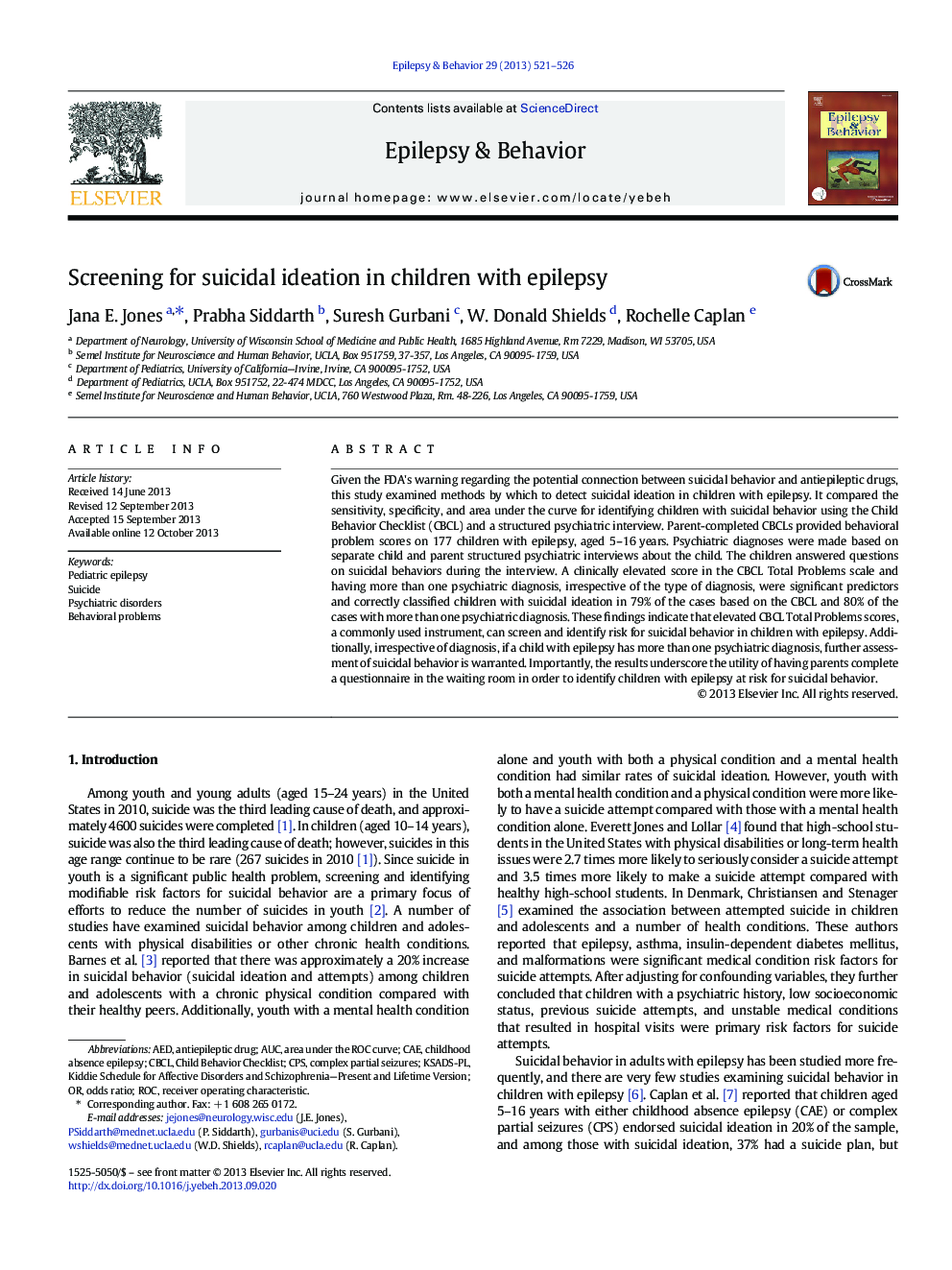| Article ID | Journal | Published Year | Pages | File Type |
|---|---|---|---|---|
| 6012673 | Epilepsy & Behavior | 2013 | 6 Pages |
Abstract
Given the FDA's warning regarding the potential connection between suicidal behavior and antiepileptic drugs, this study examined methods by which to detect suicidal ideation in children with epilepsy. It compared the sensitivity, specificity, and area under the curve for identifying children with suicidal behavior using the Child Behavior Checklist (CBCL) and a structured psychiatric interview. Parent-completed CBCLs provided behavioral problem scores on 177 children with epilepsy, aged 5-16Â years. Psychiatric diagnoses were made based on separate child and parent structured psychiatric interviews about the child. The children answered questions on suicidal behaviors during the interview. A clinically elevated score in the CBCL Total Problems scale and having more than one psychiatric diagnosis, irrespective of the type of diagnosis, were significant predictors and correctly classified children with suicidal ideation in 79% of the cases based on the CBCL and 80% of the cases with more than one psychiatric diagnosis. These findings indicate that elevated CBCL Total Problems scores, a commonly used instrument, can screen and identify risk for suicidal behavior in children with epilepsy. Additionally, irrespective of diagnosis, if a child with epilepsy has more than one psychiatric diagnosis, further assessment of suicidal behavior is warranted. Importantly, the results underscore the utility of having parents complete a questionnaire in the waiting room in order to identify children with epilepsy at risk for suicidal behavior.
Keywords
Related Topics
Life Sciences
Neuroscience
Behavioral Neuroscience
Authors
Jana E. Jones, Prabha Siddarth, Suresh Gurbani, W. Donald Shields, Rochelle Caplan,
